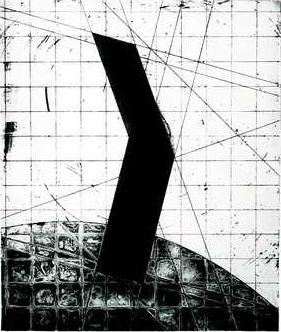You might not think a handyman’s toolbox can provide inspiration for a serious artist, but Jackson Cheatham might disagree.
Cheatham’s 1997 series of prints, "Uncle Jack’s Toolbox," currently hangs in the Roy C. Moore Art Gallery at Gainesville State College.
The exhibit, called "Jack Cheatham," provides a different perspective on everyday objects such as saw blades, axe heads and ball-peen hammers.
At first glance, viewers may not recognize the tools, inherited from Cheatham’s uncle, that inspired him to create the primarily black-and-white prints.
An art professor at the University of Georgia and Augusta State University, Cheatham said he has been interested in drawing since he was a young boy. After being drafted to the Navy in 1967, he documented the movement of ships on gridded charts.
Later enrolling in the Atlanta College of Art, Cheatham immediately found his medium in printmaking.
The process of printmaking, using metal plates that have been etched in acid and then inked up and hand-printed, provided a perfect fit for Cheatham’s technical and artistic background.
Considering himself a realist for many years, Cheatham began to move toward abstraction as he studied the essential forms of his uncle’s aged tools.
The result was "Uncle Jack’s Toolbox."
"When you look at these prints that he’s done, you really can’t see anything recognizable per se," said John Amoss, an assistant professor and gallery director at Gainesville State University. "But all of these shapes have personality that harken back to (familiar) shapes."
Amoss said the exhibit is a great lesson in abstraction for students.
"Personally I am using this show as a way to augment instruction for design classes," he said.
Amoss said abstraction begins with using objects you are familiar with, but then "you change them, react and change some more, react too until the point when it is something else. It has its own meaning."
He said the original object is "like a diving board. It’s something to jump off of, an origination point to go in a certain direction."
It is a "point of departure. Nothing comes from nothing. It starts from something. You know that thing, you kind of understand it," Amoss said.
Amoss said the chronology of the exhibit shows Cheatham’s progression toward abstraction. "They’re very recognizable initially, and then later on you can see the progression; that these shapes have been synthesized and taken out of the familiar context."
Amoss said the objects also show wear and tear like the tools they were inspired by. "The objects look like they’ve been used like the tools," he said.

